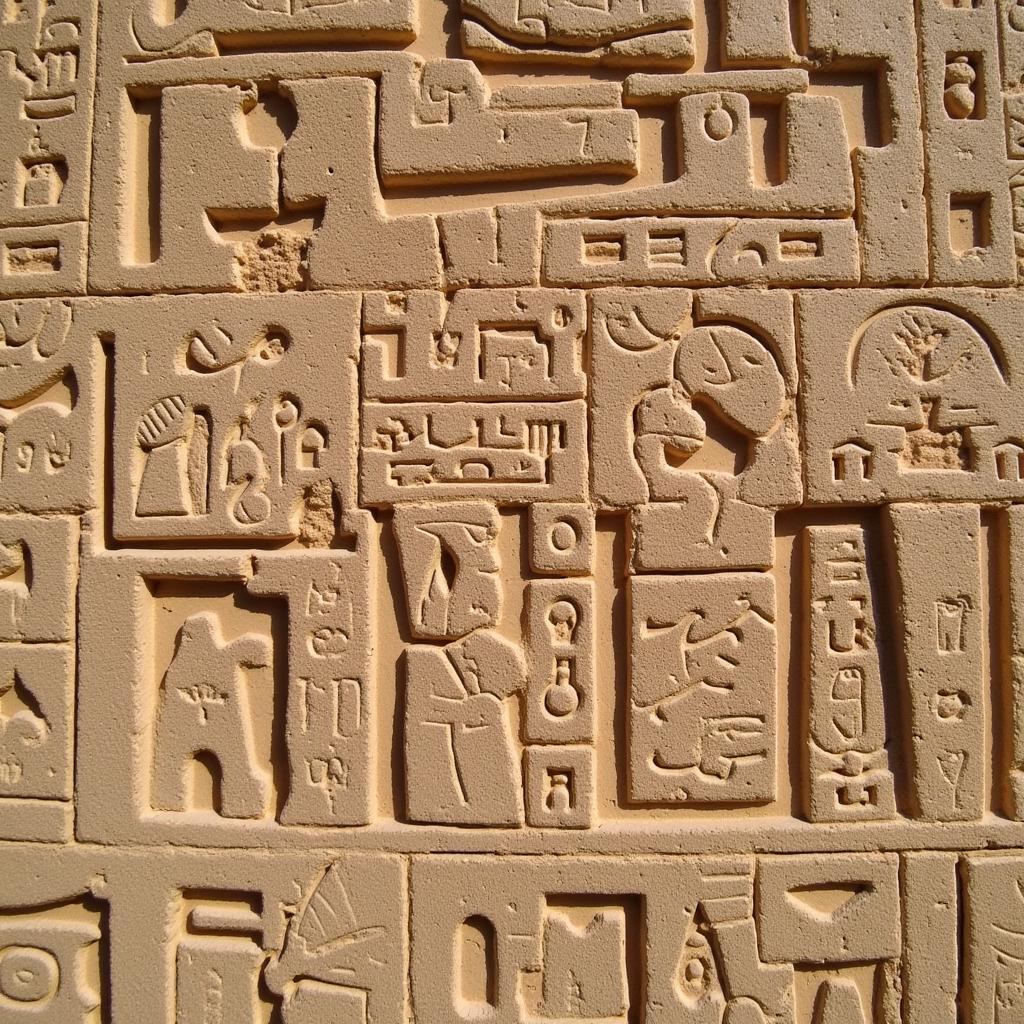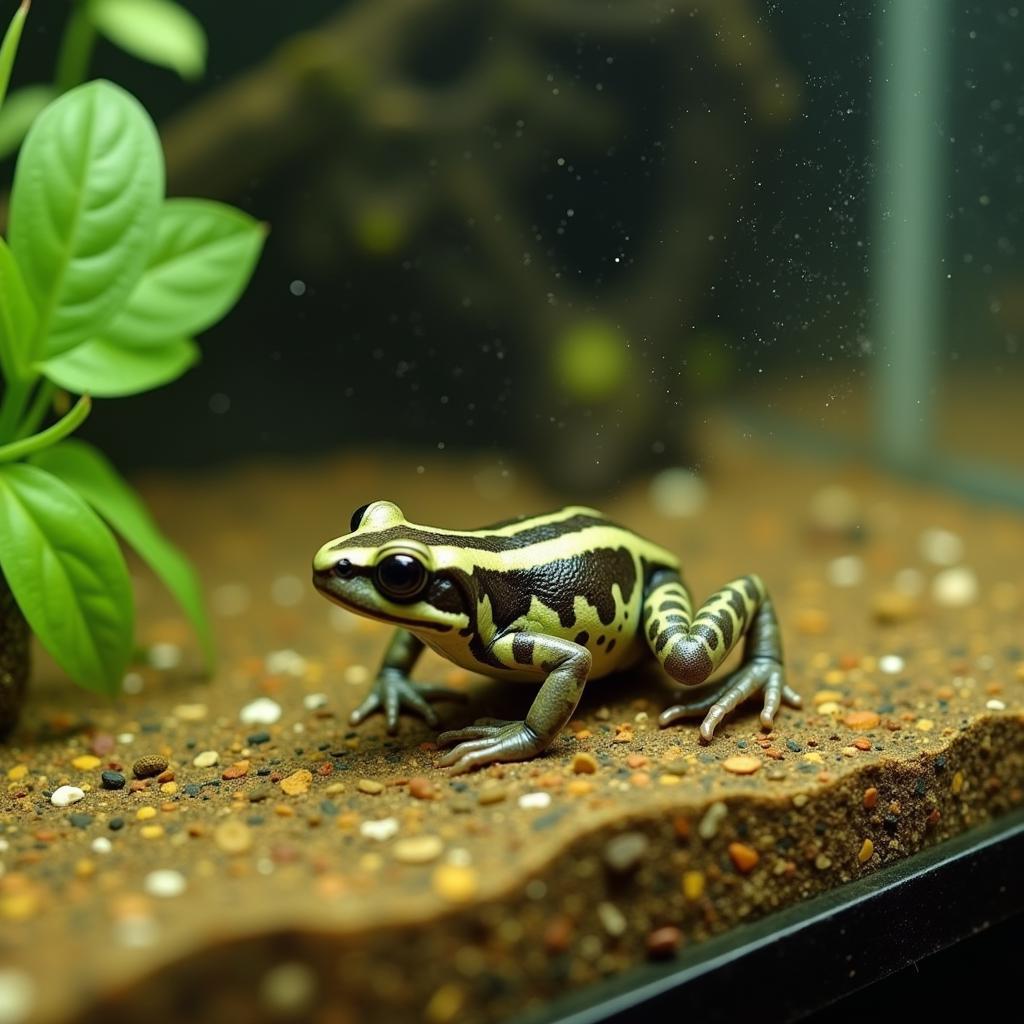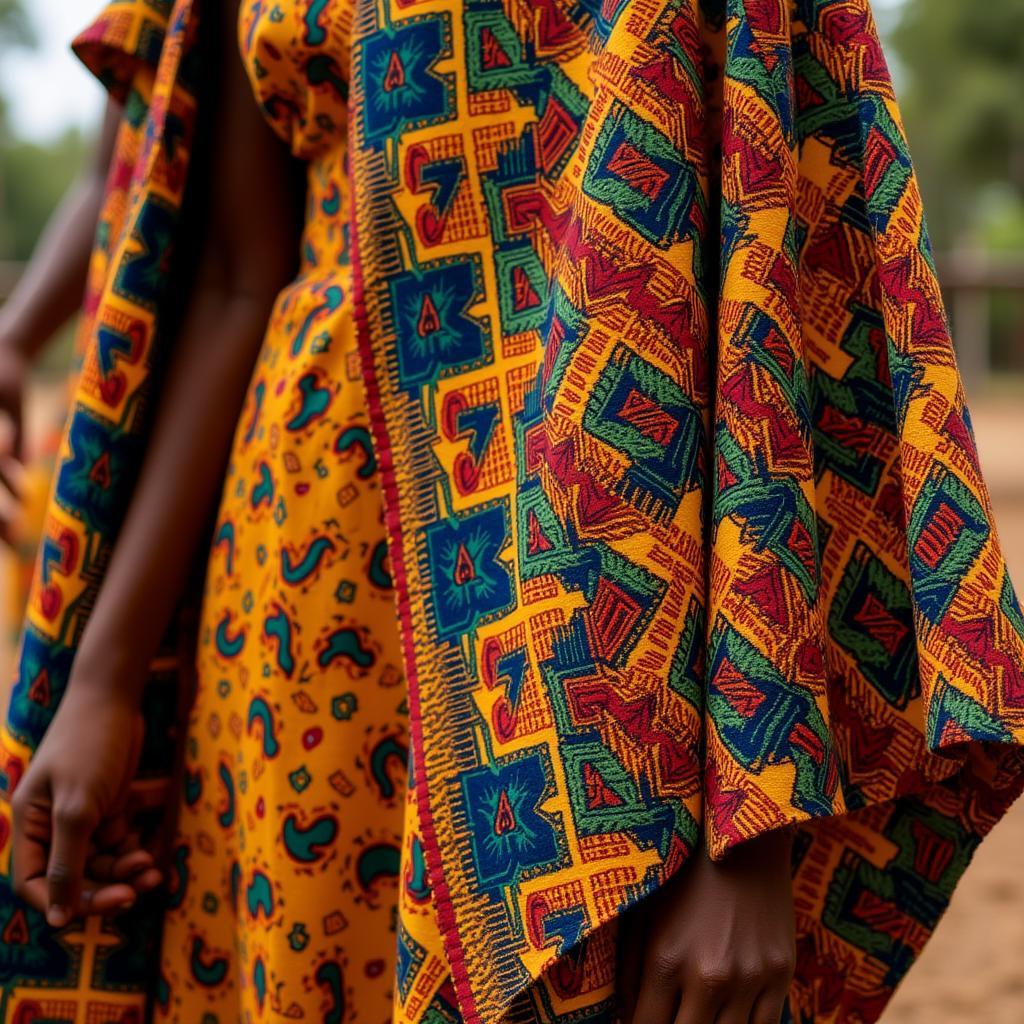Unveiling the Beauty of African Ikat Fabric
African Ikat Fabric, with its captivating patterns and vibrant colors, is a true testament to the continent’s rich textile heritage. This unique fabric, created using a resist-dyeing technique, has been cherished for centuries, adorning everything from clothing and accessories to home decor. Join us as we delve into the fascinating world of African ikat, exploring its history, production process, and enduring appeal.
A Journey Through Time: The History of Ikat in Africa
Ikat, believed to have originated in Southeast Asia, found its way to Africa through trade routes centuries ago. While the exact origins remain shrouded in mystery, evidence suggests that ikat techniques were practiced in various parts of the continent as early as the 10th century.
In West Africa, particularly in countries like Mali, Guinea, and Côte d’Ivoire, ikat became an integral part of traditional attire, symbolizing status, wealth, and cultural identity. The intricate patterns and colors woven into the fabric often held deep cultural and spiritual significance.
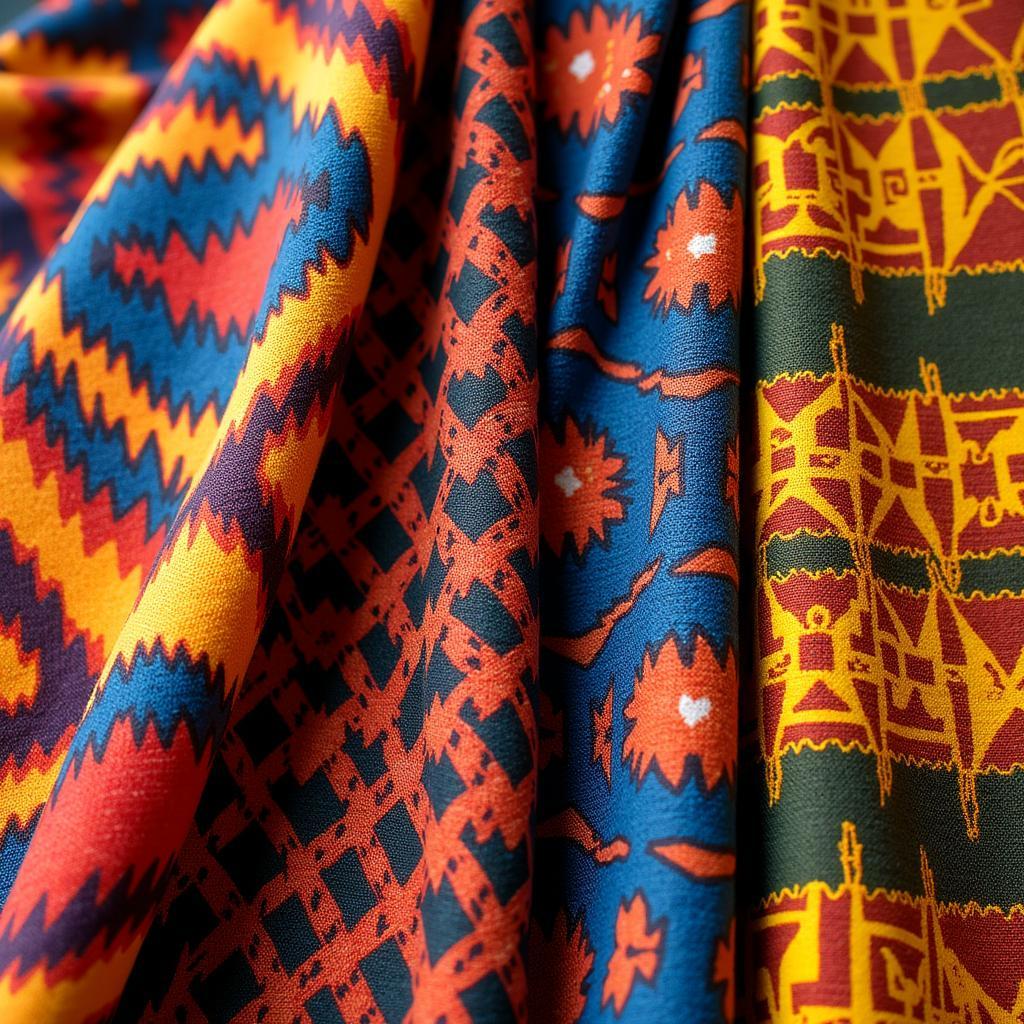 Traditional African Ikat Patterns
Traditional African Ikat Patterns
The Art of Resist Dyeing: Crafting African Ikat Fabric
Creating African ikat fabric is a labor-intensive process that requires skilled artisans and a deep understanding of traditional techniques. Unlike other dyeing methods where the fabric is dyed after weaving, ikat involves dyeing the yarn before it is woven into cloth.
-
Preparing the Yarn: The process begins with carefully selecting high-quality cotton or silk yarn.
-
Resist Dyeing: Artisans then meticulously bind sections of the yarn with a resist material, typically raffia, string, or plastic, following intricate patterns. The bound areas resist the dye, creating the characteristic ikat patterns.
-
Dyeing: The yarn is then dyed multiple times, often using natural dyes derived from plants, bark, and insects. Each dyeing stage adds a new layer of color and complexity to the design.
-
Weaving: Once the dyeing process is complete, the yarn is carefully unwound, revealing the hidden patterns. Skilled weavers then meticulously interlace the dyed yarn on a loom, transforming the threads into stunning pieces of ikat fabric.
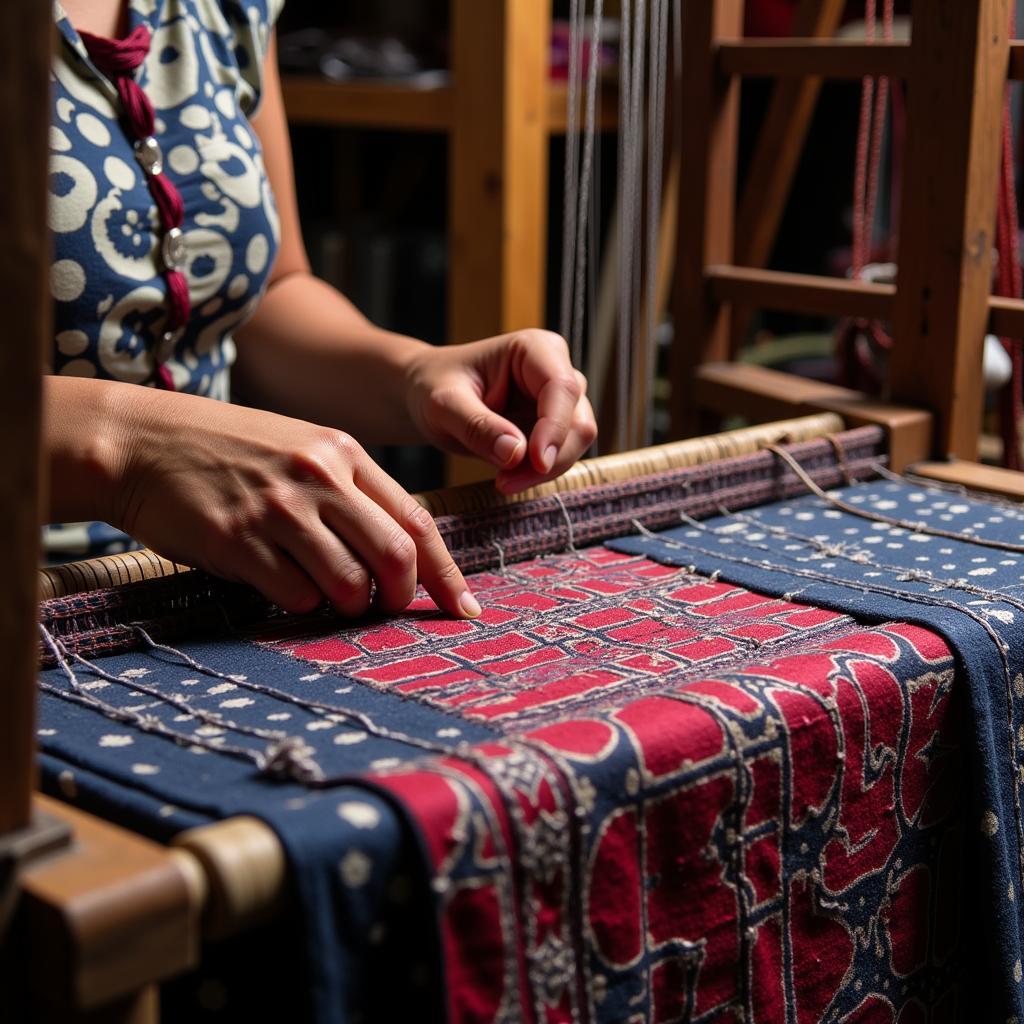 Skilled Artisans Weaving African Ikat Fabric
Skilled Artisans Weaving African Ikat Fabric
The Enduring Allure of African Ikat: A Timeless Textile
African ikat fabric continues to captivate designers and fashion enthusiasts worldwide with its timeless beauty and versatility.
A Fusion of Tradition and Modernity:
Today, African ikat is experiencing a resurgence in popularity, gracing international runways and inspiring contemporary designers. From haute couture gowns to stylish accessories and home furnishings, ikat’s unique aesthetic adds a touch of exotic elegance and cultural richness.
“African ikat is more than just fabric; it’s a story woven into every thread,” says Abena Serwaa, a renowned Ghanaian textile designer. “The intricate patterns, vibrant colors, and the stories they tell connect us to Africa’s rich heritage.”
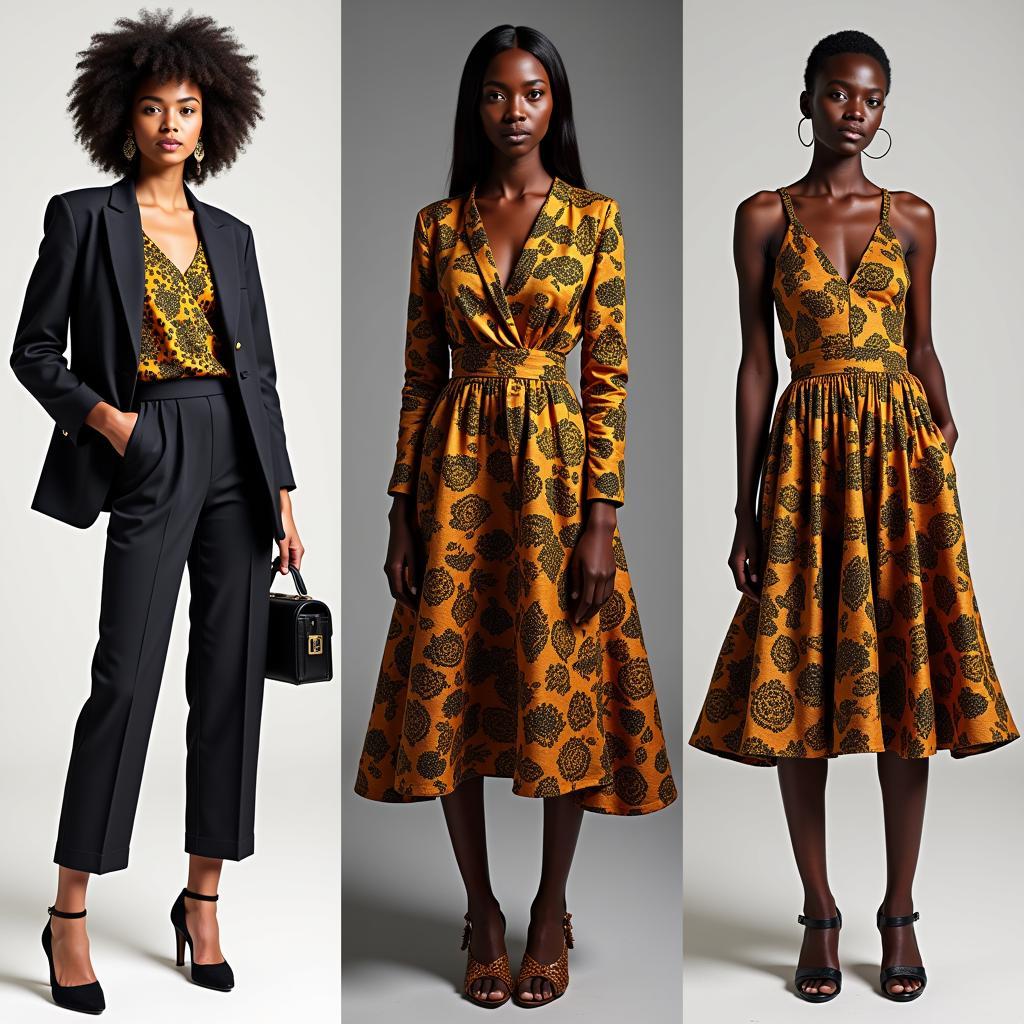 Modern Fashion Incorporating African Ikat
Modern Fashion Incorporating African Ikat
Preserving Heritage, Empowering Communities:
By supporting African ikat artisans and businesses, we contribute to the preservation of this ancient craft and empower local communities. The demand for authentic African ikat creates sustainable livelihoods for artisans, ensuring that this vibrant tradition continues to thrive for generations to come.
Conclusion
African ikat fabric, with its captivating history, intricate craftsmanship, and timeless appeal, stands as a testament to the continent’s vibrant cultural heritage. By embracing and celebrating this unique textile tradition, we not only adorn ourselves with beauty but also contribute to the preservation of a rich legacy and the empowerment of communities across Africa.
